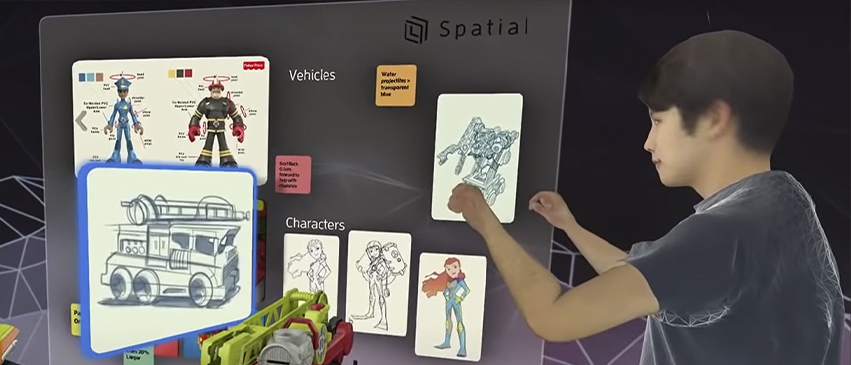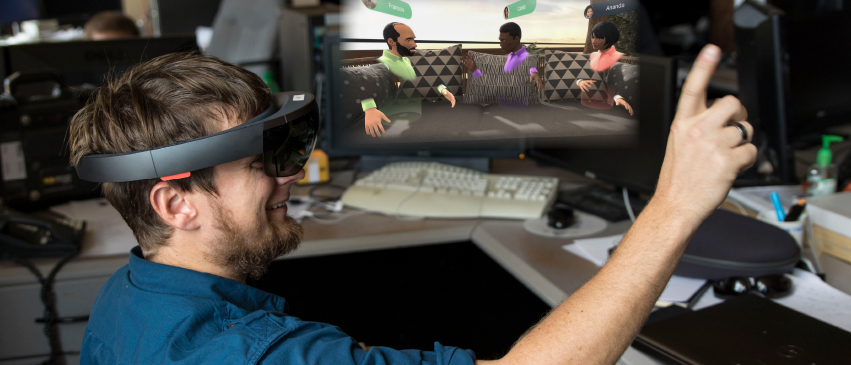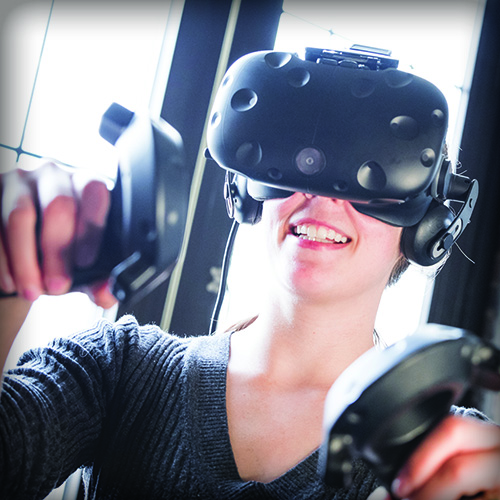
Live streaming weddings, drive-by birthday parades, virtual happy hours, parking lot get-togethers, balcony sing-alongs… We’ve seen some very creative ways to connect over the last few months. COVID-19 has been a threat to our health and economy, but not to our quest for connection.
The pandemic has proven challenging not only on a personal level, but from a business and education standpoint as well. How can we stay connected, teach our children, and conduct business without being in the same room? One word: technology.
Doing Business in a Virtual Space
What will the coming months look like for companies—especially those that conduct business on a national or global scale? Travel will certainly be patchy for a while. Even when countries are fully re-opened, people may continue to be leery of travel. There may also be a need to cut travel budgets.
When shelter-at-home orders came down, it signaled immediate changes for many companies. While some were already comfortable working from home, others are still struggling to figure it out. Either way, these arrangements are likely to stay in place—and become the new norm—for many companies. In a new survey from PwC, 50 percent of companies said they plan to make remote work a permanent option (for roles that allow it) after the pandemic. Remote work is nothing new for many teams; the current situation just exposed more companies to the concept.
As we all know, video conferencing has been a life saver for keeping teams and businesses connected during the pandemic. But what lies beyond video conferencing and that grid of squares filled with faces? A virtual world that allows you to be in a collaborative meeting space while remaining physically distant, miles away from your collaborators. VR has the ability to connect teams and engage them as they collaborate, just as if they were in the same place. Plenty of choices are available including AltspaceVR, MeetinVR, Dream, Tivoli Cloud VR and Sync, which was made available publicly on April 30 by HTC Vive.

The Vive Sync allows up to 30 participants. It integrates with Microsoft OneDrive to share files, such as images to be displayed during sessions. Users can take notes with a speech-to-text option, snap screenshots, and interact with 3D drawing and annotation tools just like a real-life whiteboarding session. And with controllers that support eye-tracking, users can capture meaningful communication involving body language and eye movements.
If you want a really futuristic look at meetings, how about a holograph of yourself? Spatial has developed a holographic collaboration platform where users can work together in the same room as avatars.
There are some hurdles—the first of which is mindset, and the second is affordable hardware. Prices for headsets can cost up to $700 for higher-end models. Factor in the costs of travel, missed business opportunities and a more cohesive team, however, and you can better see the upside and return on investment.
The Collaborative Learning Environment
All of this technology looks promising for business, but what does it mean for education? Digital learning is not new for most colleges and universities—many began offering some sort of online option over 20 years ago. Today you can find full online programs at universities around the world, while those that didn’t previously offer online learning for certain programs are finding ways to do so now.
One of the ways Simformotion, the licensee for Cat® Simulators, addressed its college clients using simulators was to offer online training sessions hosted by a trainer. Students can take the classes as an assignment, or instructors can take the classes and recreate them for their students. Not every physical location is completely closed either, so while class gatherings may be suspended, individual students can still train on simulators and save reports recorded during simulation sessions. Teachers can safely track all student progress, and the students don’t come into contact with each other.
VR training is another experience that is mobile and can go home with students. CSE Software designed Cat Safety VR training for highway construction, which features virtual training scenarios in a kit that can travel easily from one person to the next (with healthy cleanings in between each use). No physical classroom is needed.
 K-12 education has been slower to move away from traditional learning methods. Language, economic and technology barriers are a few of the considerations holding back formal remote education, but the pandemic has shown that we must find a way to conduct at least some online learning. Teachers around the country are scrambling to adapt curriculum to work online, including for students who may be recent immigrants or even homeless. (A huge thank you to all of the teachers out there!) Not every subject will translate easily to an online format—lab work and clinical training, for example, are meant to be hands-on. With some creative thinking, however, most will work with some modification.
K-12 education has been slower to move away from traditional learning methods. Language, economic and technology barriers are a few of the considerations holding back formal remote education, but the pandemic has shown that we must find a way to conduct at least some online learning. Teachers around the country are scrambling to adapt curriculum to work online, including for students who may be recent immigrants or even homeless. (A huge thank you to all of the teachers out there!) Not every subject will translate easily to an online format—lab work and clinical training, for example, are meant to be hands-on. With some creative thinking, however, most will work with some modification.
Online learning need not be a full transition of the classroom as we know it. Reduced classroom days could be augmented by digital learning that encompasses virtual classrooms using meetings, apps or other online software. Think, too, about the rise of online learning resources like Khan Academy, where kids can get tutoring in a particular subject. Even before the pandemic, online education was expected to reach $250 billion by 2025. But for digital learning to work, a number of issues must be addressed, including:
- Mindset. Like being open-minded for remote business teams, the first step in adopting online learning is mindset. Take a “we can” and “we will” attitude. Learn from the pandemic.
- Access, as in making sure kids are connected to the internet and have access to devices. Creative solutions are needed so that disparities don’t widen even further.
- Teacher development. Teachers can collaborate to find the best platforms for teaching online, and compile resources such as VR experiences that can be sent home with the student or experienced together online. Breaking down subject matter, creating curriculum, and learning how to teach in front of a virtual class are a few of the ways teachers can help one another.
The pandemic has created a lot of hardships, but it has also brought out some of the best creativity seen in a long time. Technology keeps us connected and can shape the future of work and education in new and better ways—if we let it. PM
Annette Kiesewetter is marketing strategist for CSE Software Inc. and Simformotion LLC, which uses innovative technology like AR/VR and simulation to develop training and education for companies worldwide.
- Log in to post comments

